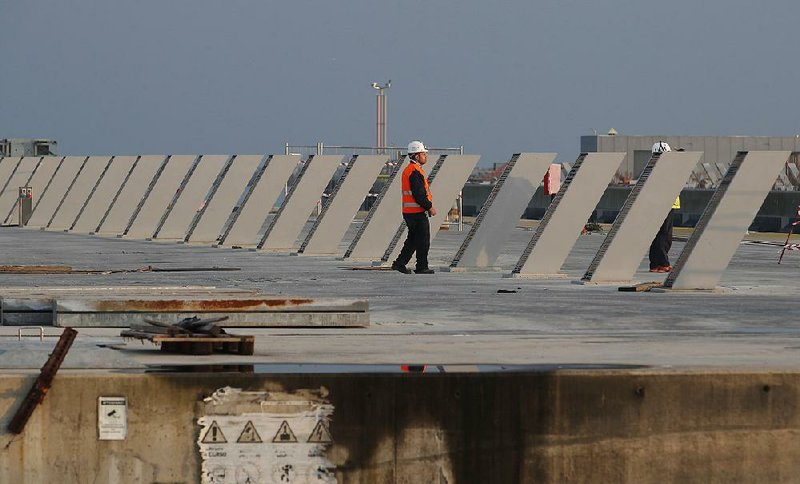VENICE, Italy -- Floated along by barge, one of the 10-ton barriers designed to relieve Venice's perennial flooding looks like a giant plaything: an oversize hinged yellow Lego.
Central to the plan to protect the city, some or all of the 78 barriers will one day be raised when the sea rises more than 43 inches, to prevent damaging high tides from pushing into the lagoon city, a world heritage site built picturesquely -- but somewhat precariously -- upon more than 120 islands. Concerns that high tides are becoming more frequent because of climate change have increased the urgency.
While the concept is simple, its realization has been anything but.
The system of movable underwater barriers, dubbed Moses, has been beset by corruption, cost overruns and delays. Projected at $2 billion and meant to be completed by 2011, the project has so far cost $6 billion and is running a decade behind schedule.
In the wake of last month's flooding of Venice, the worst in 53 years, the consortium that oversees construction of Moses is eager to demonstrate that the project -- after years of bad news -- is on track and will be fully operational by the end of 2021.
Venetians say they cannot afford to be wrong. Skeptics and critics say they may be.
A recent test of the deepest expanse of barriers -- at the Malamocco entrance to the lagoon -- was declared a success by the New Venice Consortium.
It was the last of the four sections of barriers to be completely raised -- but so far only in calm seas. The real test will come when all four are raised at once, and not only in serene waters, but under flood conditions. That isn't scheduled to take place until the end of next year.
It took six years to test each of the four movable walls covering the three openings to the lagoon, partly because work was slowed by a 2014 corruption scandal that implicated the three main contractors and sent 35 people to jail.
Work is continuing largely with the original subcontractors now contracting directly with the consortium, which itself has been placed under government control as a result of the scandal.
The fact that the barriers have not yet been physically tested in rough seas is a concern to critics.
Paolo Vielmo, an offshore marine engineer who has long criticized the project, said that tests carried out in a laboratory in the Netherlands in the 1990s indicated that the barriers, under certain conditions, would oscillate out of control -- possibly even breaking apart.
"Its behavior is not predictable," Vielmo said. He said that the trials so far declared successful have been under only modest sea conditions that fail to represent anywhere near the threat of the phenomenon of extreme oscillation called subharmonic resonance.
Vielmo and two other offshore engineers have compiled a report for the Codacons consumer and environment protection advocacy group, which is asking officials to run additional calculations to see if the project is indeed viable.
And if it is not, Codacons says Moses should be stopped.
"We don't want to delay by one minute the possibility to make Moses operational. But we say we cannot make it operational until we are sure it will work," said Franco Conte, president of Codacons in Venice. "Naturally, the Venetian community is exasperated and they say, 'If we did 95%, let's do 100% and see if that works.' But that is unconscionable. If we don't know if it works, we cannot experiment."
Information for this article was contributed by Trisha Thomas of The Associated Press.
A Section on 12/08/2019
